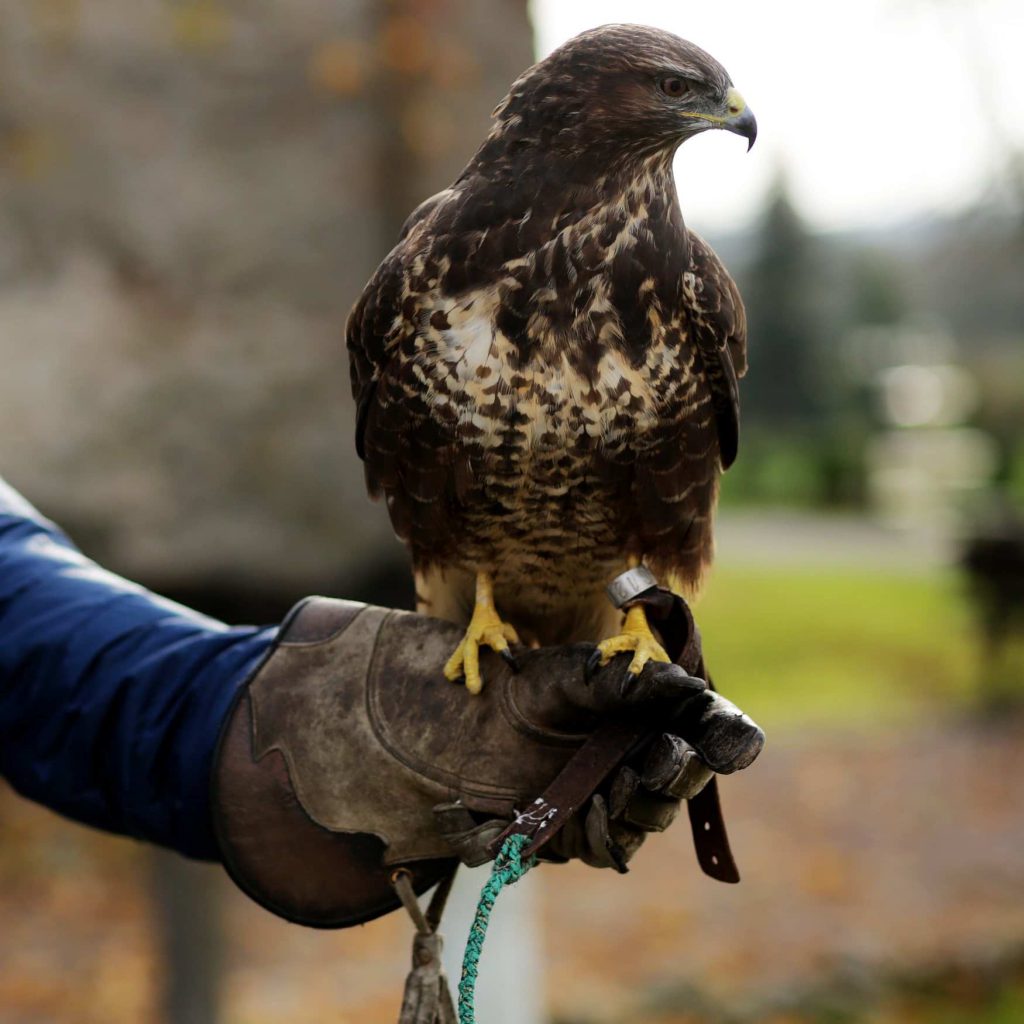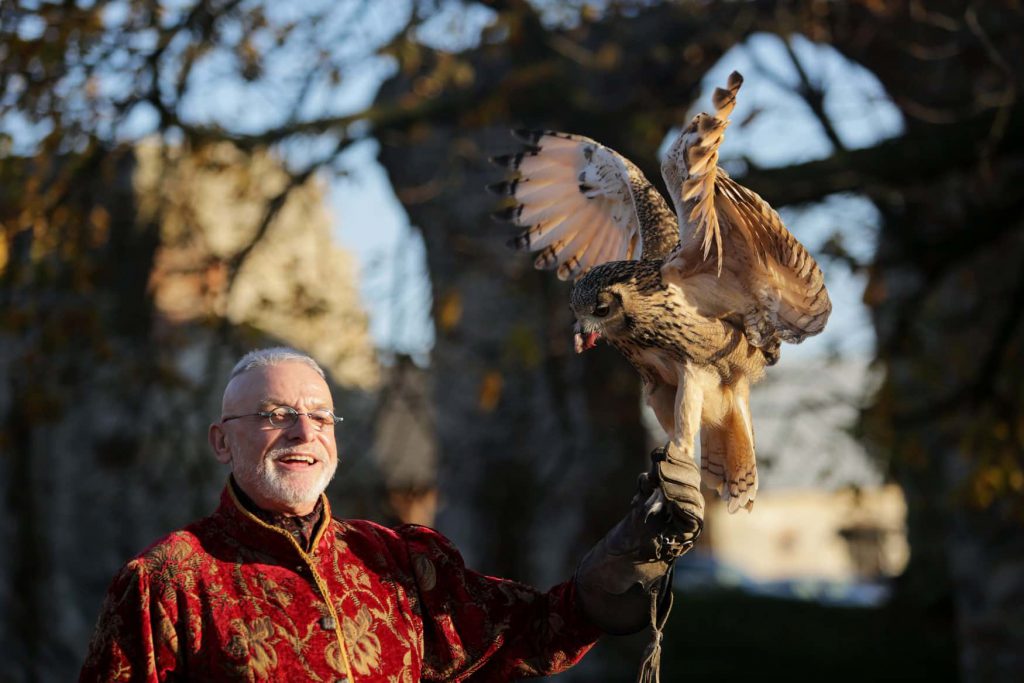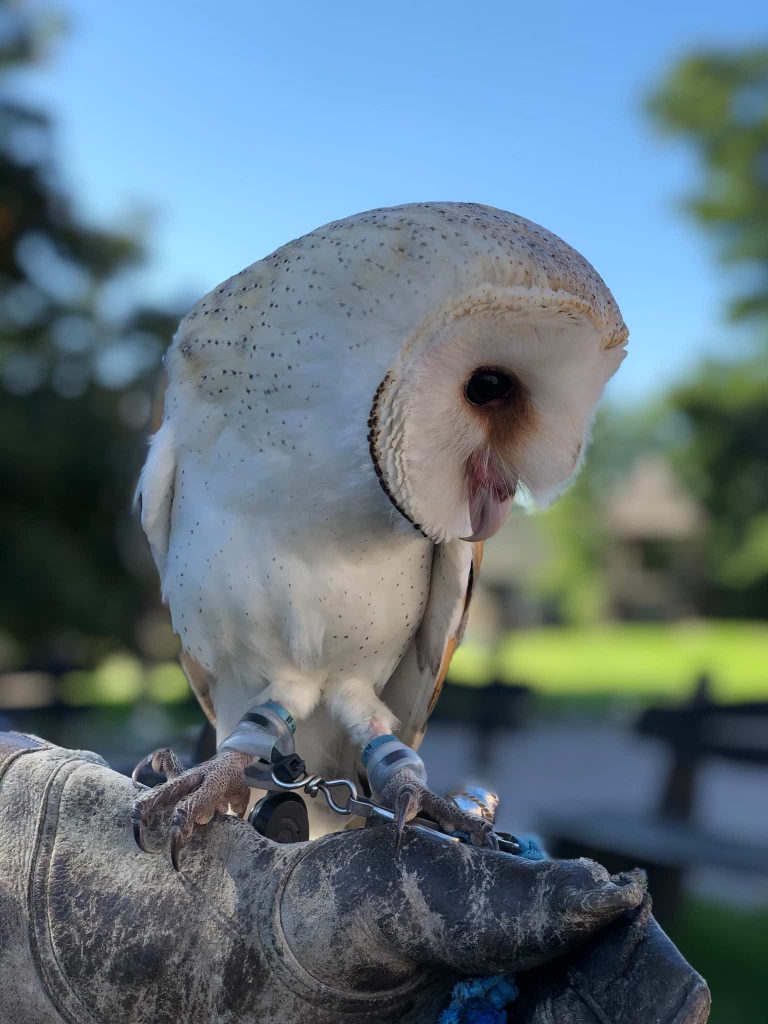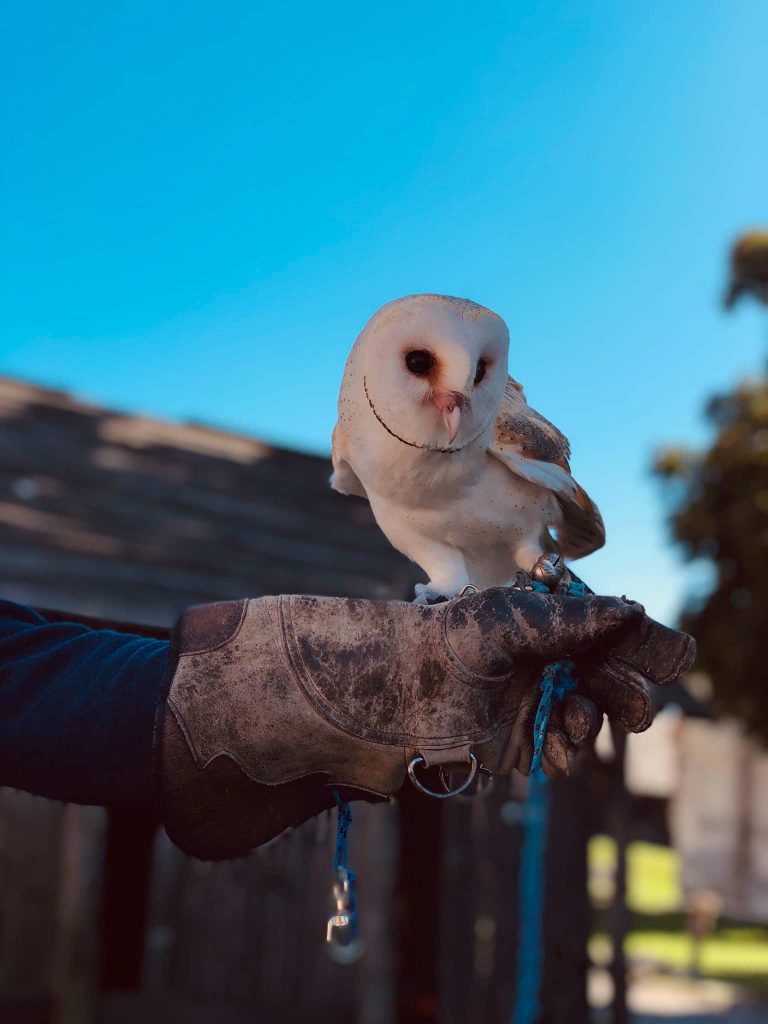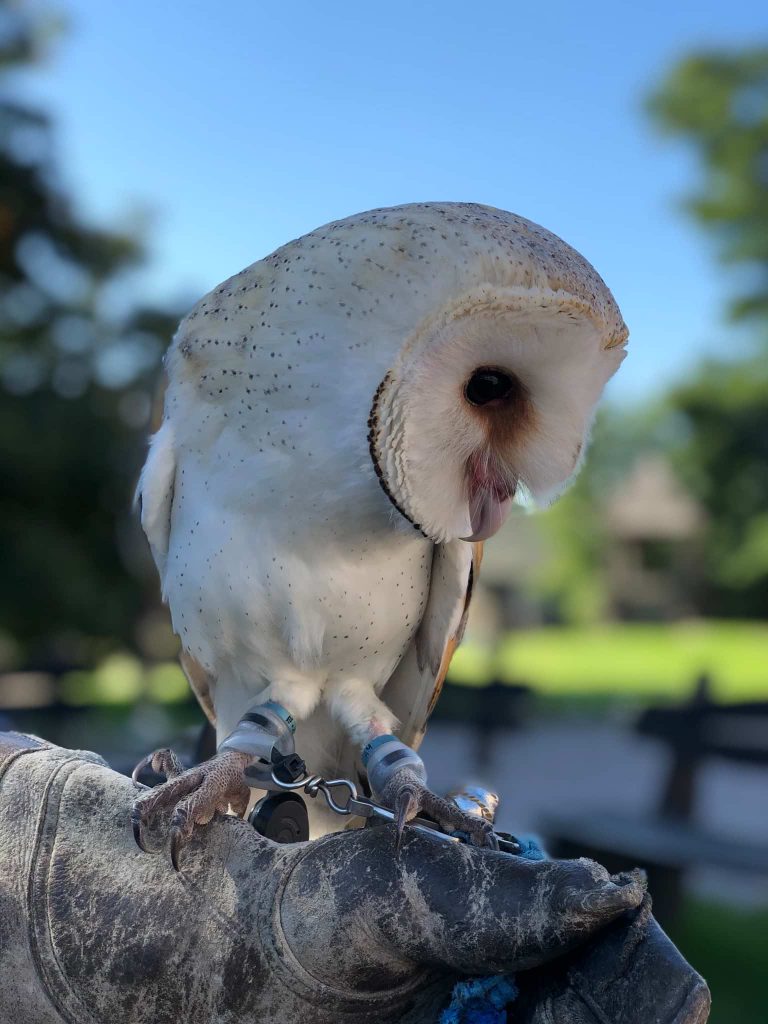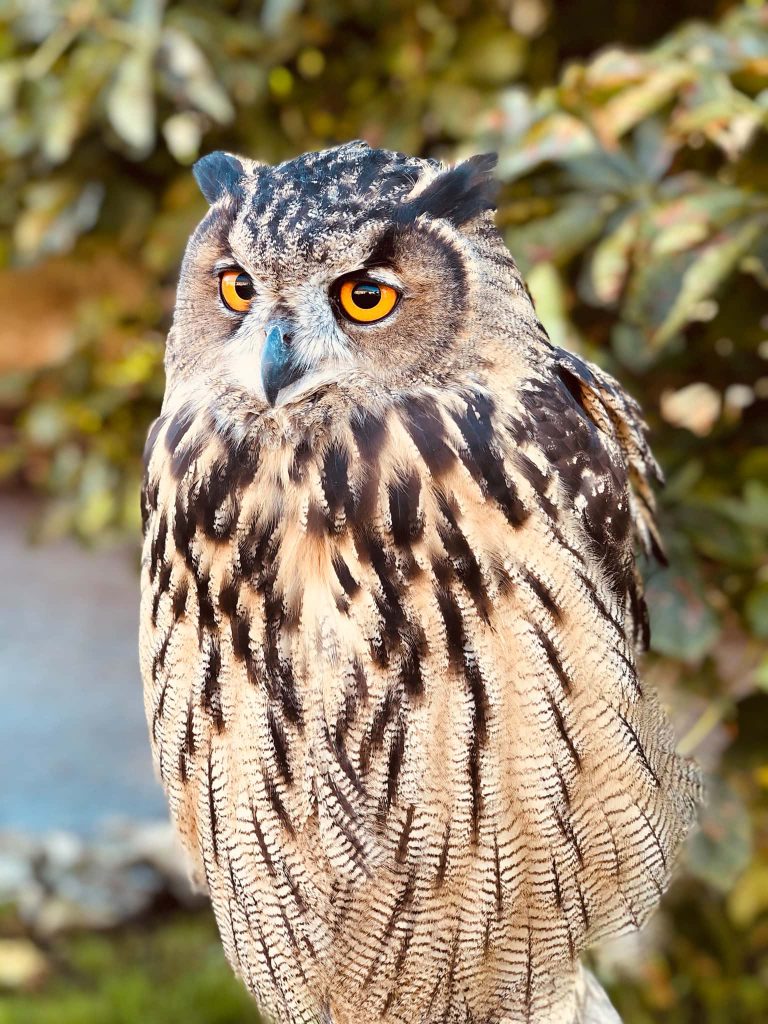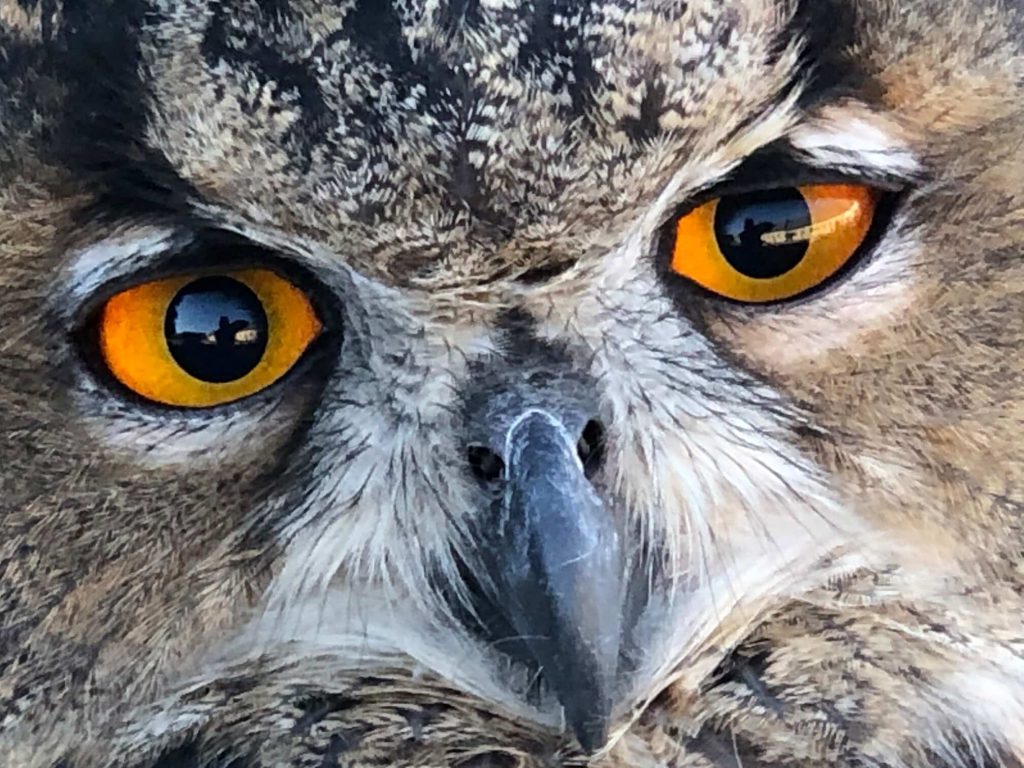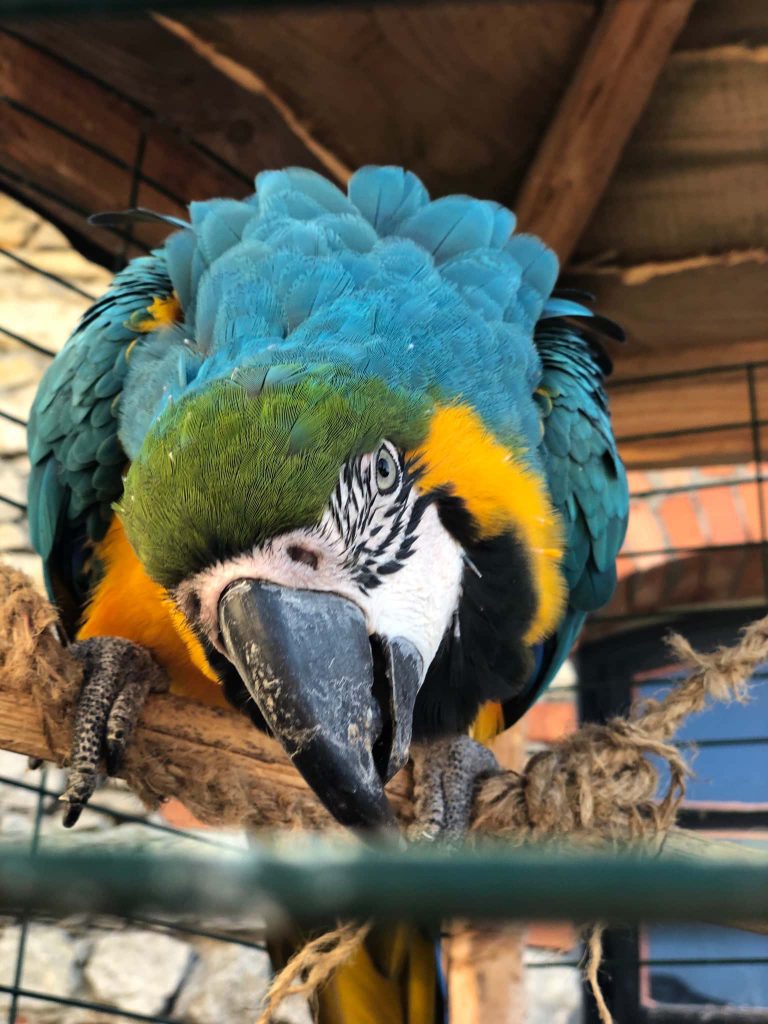Birds of prey shows
In the courtyard of the castle, our birds of prey are presented daily, they are released and fed with the participation of guests.
We also have waterfowl like swans, ducks and geese.
Our permanent, indispensable attribute of the castle is the peacock that strolls with dignity in the courtyard of the castle.
You can see some of our birds in the gallery.
Birds of prey show 200 PLN net / about 20 minutes.
We have birds of prey:
Harris Hawk – Buzzard (Parabuteo unicinctus)
A bird of prey about 56 cm in size. Wingspan 110-125 cm. male weight 600 – 840 g, female weight 820-1200 g. In nature, it occurs in the south-western states of the USA, Central America and southern Chile. It lives in steppes, deserts and semi-deserts. In the period from April to July, the female lays 2-4 eggs in a nest on a tree or cactus. The incubation period is 35 days. The young leave the nest after 38 days. The birds hunt in family groups of usually 5 individuals. They eat mice, rats, rabbits, lizards and small birds. They are probably the only birds of prey that hunt in groups, due to their gregarious lifestyle, they require careful socialization. Due to their specific character, they gained popularity among American and English falconers. They breed in captivity and also in Poland. Although in our climatic conditions, they need warm rooms for the winter.
European Eagle Owl Bubo bubo
The Eagle Owl is a beautifully colored bird: it has darker spots and very delicate transverse stripes on its light brown feathers. Tufts of feathers sticking out over the large, round head look like feathery ears. Around the huge eyes with orange irises, there is a radiant gray-cream smudge. He is a giant among owls. Its large, rounded wings have a span of over 1.5 meters, and the body reaches 60-75 cm in length. Clear sexual dimorphism.
The Eagle Owl is active mainly at night. Its flight is silent, it flaps its wings slowly, alternating with the phase of gliding flight. During the day, it remains hidden next to tree trunks. He has excellent eyesight and sense of smell, so he can easily track his prey – a bird (thrush, black grouse, pigeon, as well as jay, jackdaw, raven and buzzard), mammal (grubber, mole, hedgehog, mouse, rabbit, young fox), amphibian ( frog, lizard). Probably the eagle owl also uses carrion (swan, wild boar). In addition, eats a lot of plant food to aid digestion. Eagle owls mate in permanent pairs already in autumn. It is a sedentary species and inhabits the territory once selected for many years, although it does not breed every year. An example is the eagle owl stand in the “Bory Tucholskie” National Park, which has been in operation for at least 70 years! Eagle owls do not build their own nest; they often use old nests of birds of prey or black storks. Many pairs nest directly on the ground, for example, under windings, in a hole next to a tree trunk, in clumps of shrubs or grasses. Such ground nests are a small basin lined with crumbled pellets: bones, hair and feathers of victims. The male hunts in the immediate vicinity of the nest (up to 1-1.5 km) most intensively from January to April, although its individual calls can be heard throughout the year, sometimes even during the day. The breeding season usually begins in March. The female usually lays 2-4 eggs. The intervals between laying subsequent eggs are 2-4 days, and their incubation lasts 32-35 days. Almost only the female incubates. Chicks do not hatch simultaneously. If the hatch is threatened, they can be transferred by the female to another place. Chicks stay in the nest for a very short time for such a large bird, i.e. about 4-5 weeks. At this age, they weigh about three-quarters of an adult’s weight and usually leave the nest before they can fly. This is a very dangerous period in their lives. They hide then, scattered around the nests, using various natural covers, e.g. dense bushes, tall reeds and grasses.
Write to us

